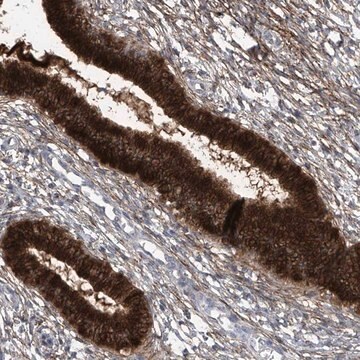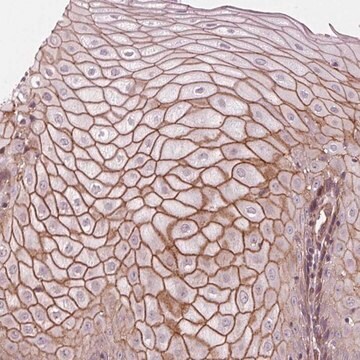MABS1225
Anti-TXNIP Antibody, clone JY2
clone JY2, from mouse
Sinônimo(s):
Thioredoxin-interacting protein, Thioredoxin-binding protein 2, Vitamin D3 up-regulated protein 1
About This Item
Produtos recomendados
fonte biológica
mouse
Nível de qualidade
forma do anticorpo
purified immunoglobulin
tipo de produto de anticorpo
primary antibodies
clone
JY2, monoclonal
reatividade de espécies
human, mouse
técnica(s)
western blot: suitable
Isotipo
IgG1κ
nº de adesão NCBI
nº de adesão UniProt
Condições de expedição
ambient
modificação pós-traducional do alvo
unmodified
Informações sobre genes
human ... TXNIP(10628)
Descrição geral
Especificidade
Imunogênio
Aplicação
Signaling
Western Blotting Analysis: A representative lot detected TXNIP in adult mouse cardiomyocytes. No TXNIP target band was detected in cardiomyocytes from Txnip-null mice (Yoshioka, J., et al. (2007). Circ. Res. 101(12):1328-1338).
Qualidade
Western Blotting Analysis: A 1:2,000 dilution of this antibody detected TXNIP in 10 µg of HeLa cell lysate.
Descrição-alvo
forma física
Armazenamento e estabilidade
Outras notas
Exoneração de responsabilidade
Não está encontrando o produto certo?
Experimente o nosso Ferramenta de seleção de produtos.
Código de classe de armazenamento
12 - Non Combustible Liquids
Classe de risco de água (WGK)
WGK 1
Certificados de análise (COA)
Busque Certificados de análise (COA) digitando o Número do Lote do produto. Os números de lote e remessa podem ser encontrados no rótulo de um produto após a palavra “Lot” ou “Batch”.
Já possui este produto?
Encontre a documentação dos produtos que você adquiriu recentemente na biblioteca de documentos.
Nossa equipe de cientistas tem experiência em todas as áreas de pesquisa, incluindo Life Sciences, ciência de materiais, síntese química, cromatografia, química analítica e muitas outras.
Entre em contato com a assistência técnica







